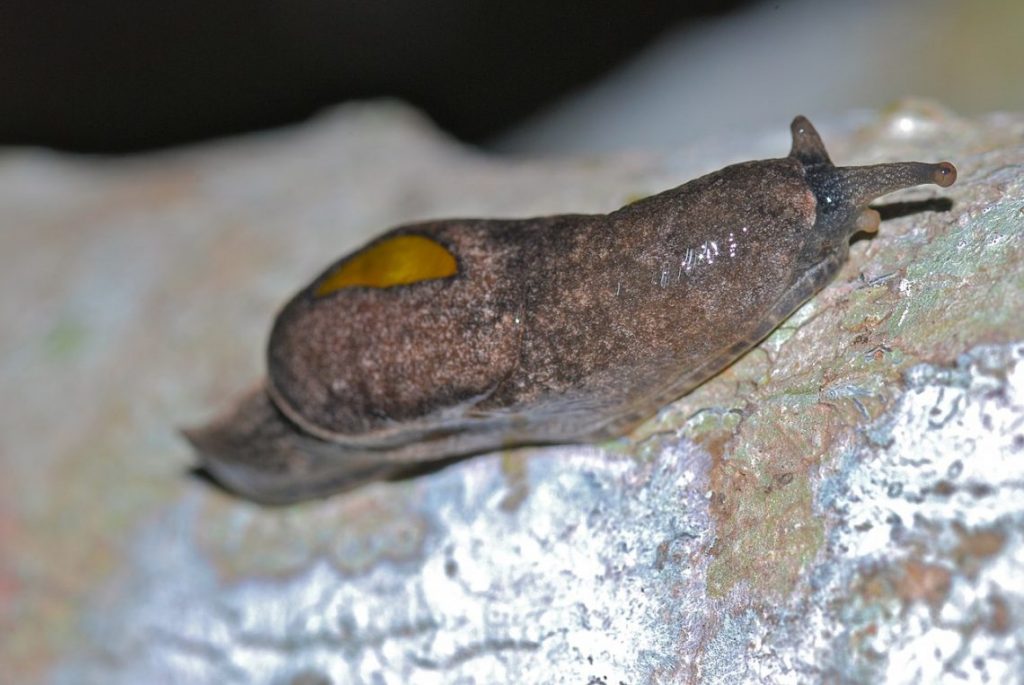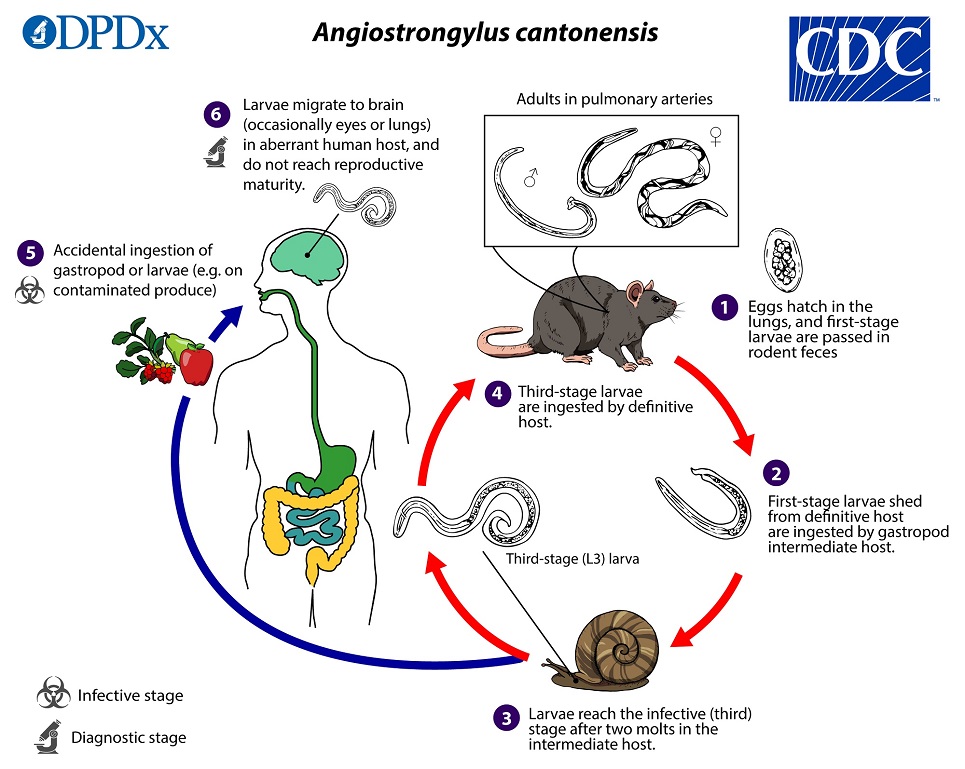In 2017, rat lungworm disease was making big headlines with an unprecedented 21 cases on Hawaiʻi Island and Maui. Those afflicted told stories of blinding headaches and feeling like their skin was on fire. Although the disease had been present in Hawaiʻi for over 50 years, many residents were learning about it for the first time. The spike in cases followed the spread of the invasive semi-slug. Nearly all slugs and snails in the islands can carry the parasite, but the semi-slug is the most common vector.


These pests hide in produce and if gardeners and shoppers don’t thoroughly wash their lettuce, broccoli, or other greens, humans can accidentally ingest infected slugs and snails. Even juveniles smaller than a tic-tac can carry the parasite. In the human body, the parasite makes its way into the brain and dies. This triggers a rare type of meningitis that causes the lining around the brain to swell. Results range from flu-like symptoms and light sensitivity to nerve damage and even death. Diagnosis is complex, and there is no specific treatment or cure.
The rat lungworm parasite begins its life cycle in a rat’s lungs. The eggs of the parasite hatch in the lungs and travel to the digestive tract, exiting the body through the rat’s feces. Nearby slugs and snails eat infected poop, becoming secondary hosts. Other hosts include cane toads, coqui frogs, freshwater shrimp, and centipedes.

In February 2022, Bishop Museum published a survey confirming the presence of rat lungworms in invasive slug and snail hosts on six Hawaiian Islands (excluding Kahoʻolawe and Niʻihau). Norine Yeung, Malacology Curator at the Bishop Museum, was not surprised by the results. “There are over 60 invasive slug and snail species in the state,” she says. “All have the potential to carry rat lungworm. As long as there are rats, slugs, and snails in Hawaiʻi, it is almost certain that the parasite will continue to exist here.”


But with the rat lungworm parasite so widespread, why arenʻt there more cases of human infection? In 2020 and 2021, Hawaiʻi saw a combined total of 10 cases. The Covid pandemic led to more people staying home and an increase in home gardening, so it seems plausible that more people would be in contact with the parasite. Yeung has a hunch on why folks havenʻt been getting sick, “Rat lungworm awareness campaigns reached nearly every resident during 2017. On the front page of the news, in community meetings, information was everywhere.” If Yeung is correct, residents not only got the message but strengthened daily habits to prevent contracting the parasite. Fast forward to 2022, and continued practice of these habits remains vital. Here are a few actions to incorporate into your routine:
- Eliminate hungry rats from your garden or orchard. Set traps (be sure to check them) and remove debris that could be hiding or nesting places for rodents.
- Slugs and snails need cool, damp places to rest during the day. Remove overgrown vegetation, check under potted plants, or use dripline irrigation to reduce habitat. If slugs and snails are present, bait pellets and granules containing metaldehyde or iron phosphate have proven effective in reducing numbers (just make sure pets don’t have access to them).
- In the evening or early morning, pick pests from your garden using disposable gloves or a designated pair of tongs. Drop any plucked pests into a wide-mouthed bottle filled with a 15% salt water solution. After several days, the saltwater will kill the slug and any rat lungworm larvae. Dispose of it in the trash. Other methods to kill both host and parasite are pouring boiling water on collected slugs in a metal pot or freezing them in a sealed bag for 48 hours.
- Rinsing produce under running water and drying is the best way to remove any parasites from your veggies. Boiling, steaming, and sauteeing veggies for at least 3-5 minutes will kill any lingering larvae. Freezing produce for 48 hours is also effective. For fruit or veggies with a peel or rind (think bananas, mangos, pumpkins, etc.), rinse thoroughly before consuming.
Yeung feels optimistic. So far, no new cases have been reported this year. “Good sanitation and washing are key to preventing the spread of this parasite,” she says. She recommends keeping an eye out for invasive garden pests so new rat lungworm hosts don’t get established. Report any new pests to your local invasive species committee or 643pest.org. Learn more about snails and slugs through Bishop Museumʻs Malacology Department webpage at bishopmuseum.org/malacology.
Serena Fukushima is the public relations and education specialist for the Maui Invasive Species Committee. She holds a bachelor’s degree in environmental studies and a graduate degree in education from the University of Hawaii at Manoa. “Kia’i Moku, Guarding the Island” is written by the Maui Invasive Species Committee to provide information on protecting the island from invasive plants and animals that threaten our islands’ environment, economy and quality of life.
This article was originally published in the Maui News on May 14, 2022 as part of the Kia‘i Moku Column from the Maui Invasive Species Committee.
Read more Kiaʻi Moku articles
